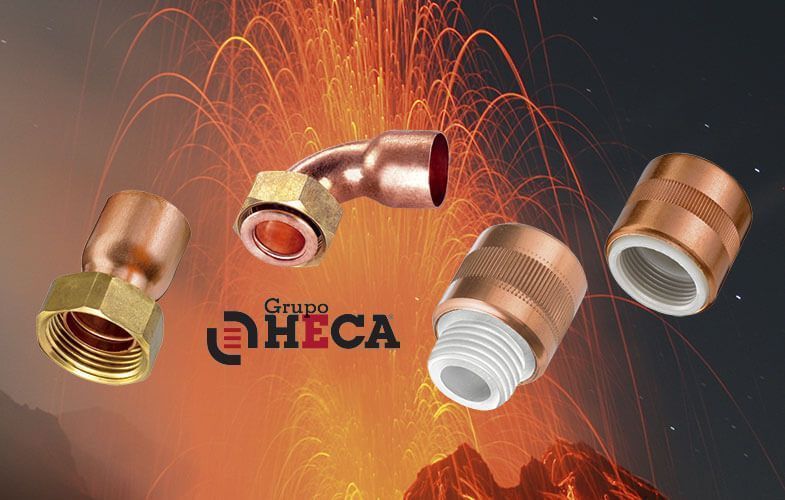Copper characteristics
The determining properties of copper uses are:
-The electrical conductivity.
-Resistance to corrosion.
-The thermal conductivity
– Malleability and flexibility
-The attitude with welding
-Fungicidal properties (which destroy fungi)
Antibacterial copper
It has been shown that copper and its alloys are able to eradicate the most resistant bacteria and virus.

The fast-acting mechanism of copper on bacteria
1. Copper prevents bacteria, fungi, etc. developing on its surface.
2. If the bacteria are in contact with copper, the cell membrane of the bacteria breaks.
3. The ions in copper generate an oxidative stress that causes additional damages to the cells of the virus.
4. The DNA of the bacteria degrades, which prevents them from developing resistance to copper.
The advantage of copper against nosocomial diseases
Several tests in laboratories and experiments in different hospitals around the world have proved the effectiveness of copper and its alloys against bacteria such as salmonella, Escherichia coli and staphylococcus resistant to methicillin (antibiotic). A copper surface eliminates staphylococcus in 90 minutes and reduces the number of pathogenic germs by 90 to 100% relative to the same surface constructed of standard materials. Another study conducted by the University of Southampton has shown that copper also allows the inactivity of flu virus in a few hours.
Copper and drinking water transportation
Copper limits the development of a number of infectious parasites, algae, bacteria and preserves in water all its sanitary qualities. Perfectly impermeable, copper piping protects water from all pollution from polluting external agents as well as from household cleaning products, insecticides or even organic solvents.
Economical copper
A copper installation is a durable installation: Copper resists cold, heat, pressure and temperature variations, and wear and tear without compromising. It is needed a little maintenance. The noble characteristics of this non-ferric metal give it an average life guarantee of 30 years.
It is ideal for heating: The absence of dimensional variation on a copper heating system prevents loss of pressure in the ducts, stabilizes the pumping rate and consequently regulates the energy consumption.
Ecological copper
Copper is 100% recyclable without loss or alteration of quality.

Copper safety
Copper pipes are non-combustible and do not draw smoke or toxic gases in case of fire.
Copper: an indispensable trace element
Our body contains less than a gram of copper … so we would not know how to live without it. Like the trace element, copper is involved in the development of the nervous and cardiovascular system, the transport of iron, bone growth, and the proper functioning of immune functions. Copper helps the absorption of iron and influences the regulation of cholesterol metabolism.
Copper plays a vital role in bone conservation to combat osteoporosis.





It’s good to know that copper pipes are non-combustible and do not draw smoke or toxic gases in case of fire. I think this one of the good properties of copper, especially for industrial use. My father-in-law is building his next manufacturing plant on a new site and I’ll suggest to him to use copper pipes. Your article is definitely a good read for someone who is unfamiliar with copper benefits.
Good to hear that it helped you
I appreciate it when you explained that copper is best to use in transporting water because of its sanitary qualities that prevent mold, parasites, algae, and bacteria from growing. I think it is best to use this kind of material for my kids’ bathroom. Their sink needs a replacement after all. If there is a greater possibility to protect their health through this, then I will consider it. Thank you.